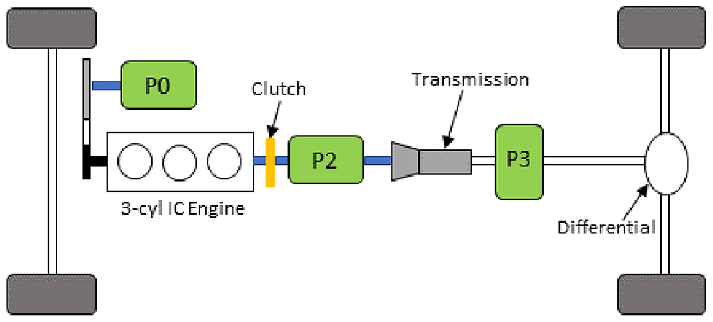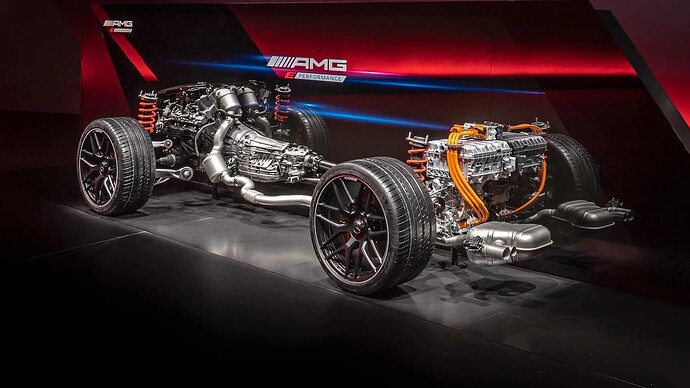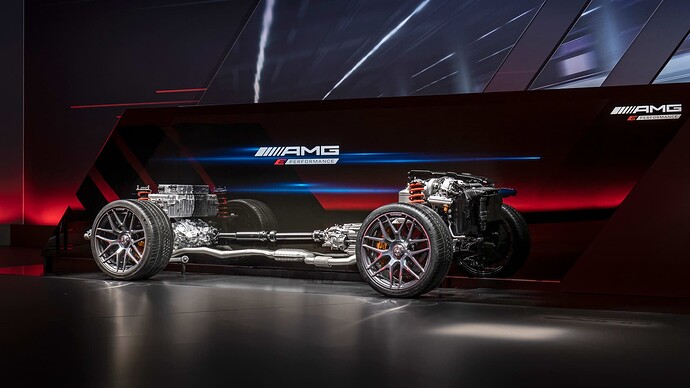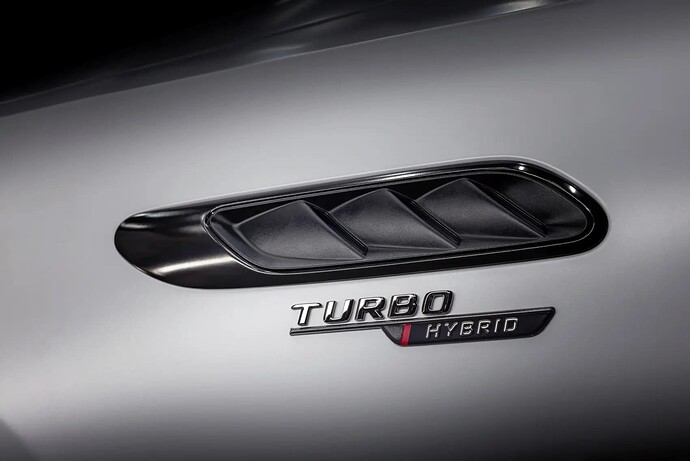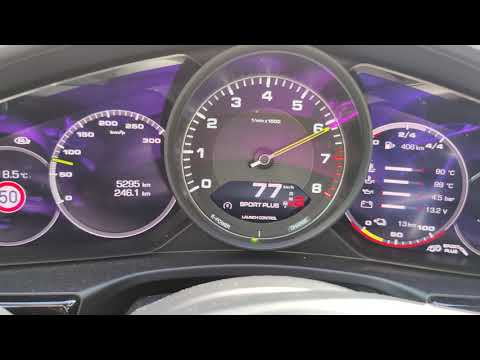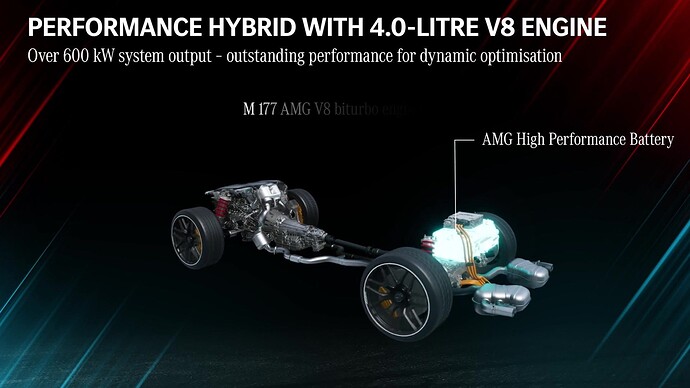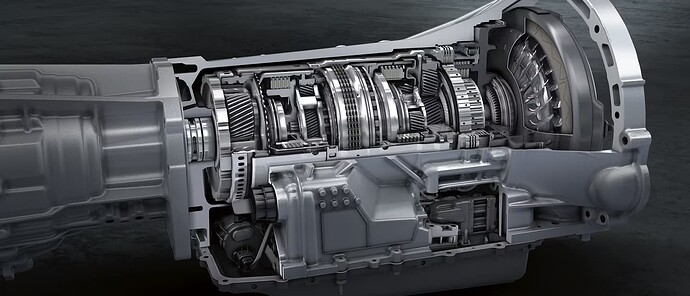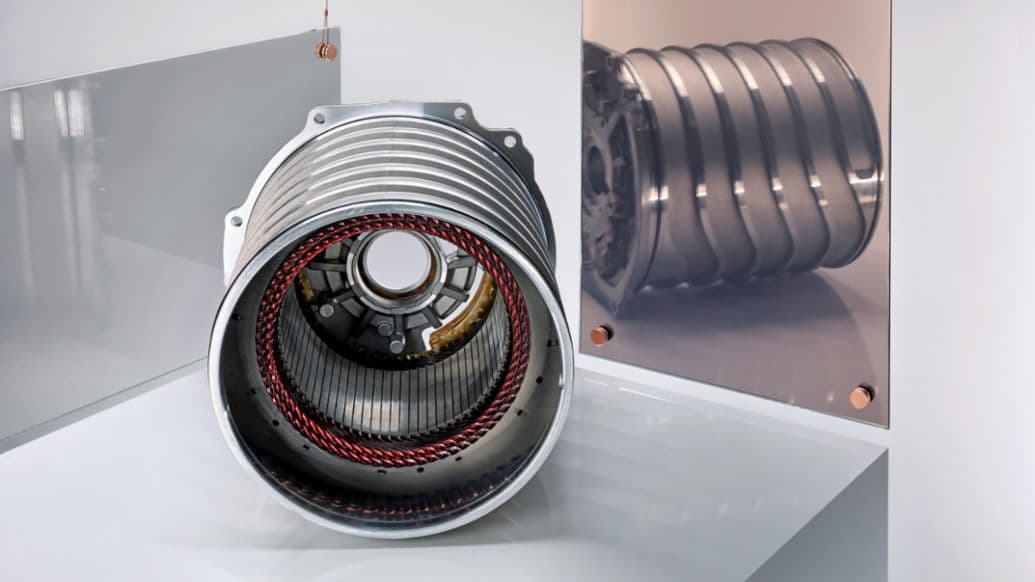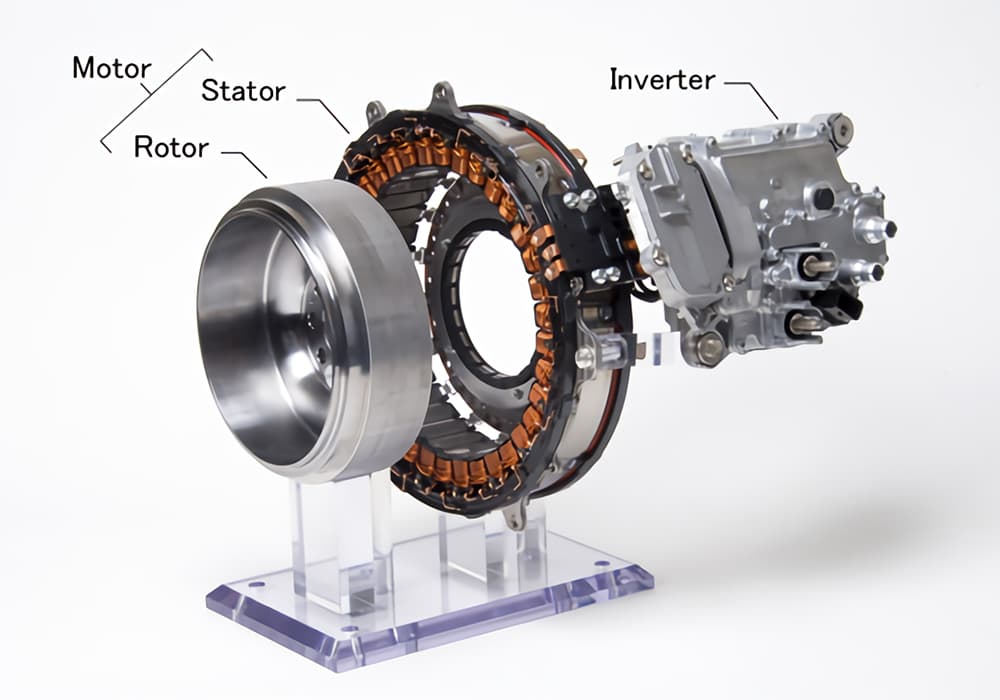4 - better efficiency
this one is not obvious at all, especially considering the cars with P3 can’t even get 20 mpg but that’s because of the 700 horsepower thing, and not P3 layout.
there are basically 3 reasons why P3 is more efficient.
A - simpler transmission design ( 2 speeds instead of 9 ) can have lower friction losses
B - separate transmission doesn’t tie motor RPM to engine RPM
C - different motor type is used
taking one by one …
A - simpler transmission design ( 2 speeds instead of 9 ) can have lower friction losses
modern transmissions are exceedingly complex mechanically. here are some images of the Ford / GM 10 sped transmission
power in such transmissions doesn’t flow directly put combines various planetary sets in different combinations to produce all the gear ratios.
by contrast Electric Motors due to their wide powerband with maximum torque at 0 rpm and peak RPM of about 15,000 barely need any gears at all. in case of Porsche Taycan and AMG P3 there is a 2-gear transmission - in such a transmission power flows directly reducing friction losses.
in fact the 2-speed transmission is so simple that AMG P3 integrates the motor, transmission and limited slip differential all into the same housing - which is purchased as a single unit from a supplier.
B - separate transmission doesn’t tie motor RPM to engine RPM
Combustion Engine is most efficient at the lowest RPM at which it can meet the load demands. Electric Motor is most efficient closer to its medium speed. So the optimum RPM for motor is much higher than optimum RPM for engine - and yet in P2 hybrids whenever the ICE runs the electric motor can only run at the same exact RPM as the ICE, whether that RPM is optimal for the motor or not.
with P3 the motor has its own 2-speed gearbox so RPM for motor and engine can run at different RPMs - each one at RPM that is optimal to it.
C - different motor type is used
motor type used in P3 configuration is the same as what is used in my Volvo or in full EVs, namely the rotor looks like this:
it’s basically a solid chunk of iron with some magnets in it. and then it goes into a stator that looks like this:
this is how you want your electric motor to look but such a motor would not work in P2 configuration for a number of reasons.
1 - it is too long.
2 - it has too much inertia.
3 - it spins too fast.
thus P2 hybrids use motors that look like this:
this motor is basically hollow on the inside. they used to be called “pancake” motors but as power demands grew they got thicker and no longer look like a pancake.
here is a lower power pancake Integrated Starter Generator used in P2 position
such motors are designed to have low profile, low rotational mass and high torque, which are rather mutually exclusive … such a motor is a one trick pony - it is good for torque fill, but not much else.
this motor is basically crippled by the need to be flat and hollow. it needs to be flat to fit in transmission and hollow because if it had a solid iron core the rotational inertia would break the transmission.
yet that solid iron core is what conducts the magnetic field - it isn’t just there for fun.
P3 allows the use of a full-fat EV motor instead of pancake motor because there is both the space for it and the custom transmission can handle the inertia of a solid chunk of iron spinning at 15,000 rpm. it can handle that because it is relatively much more simple than a 8, 9 or 10 speed transmission and also it ONLY needs to handle the motor, not the combination of Engine and Motor.
